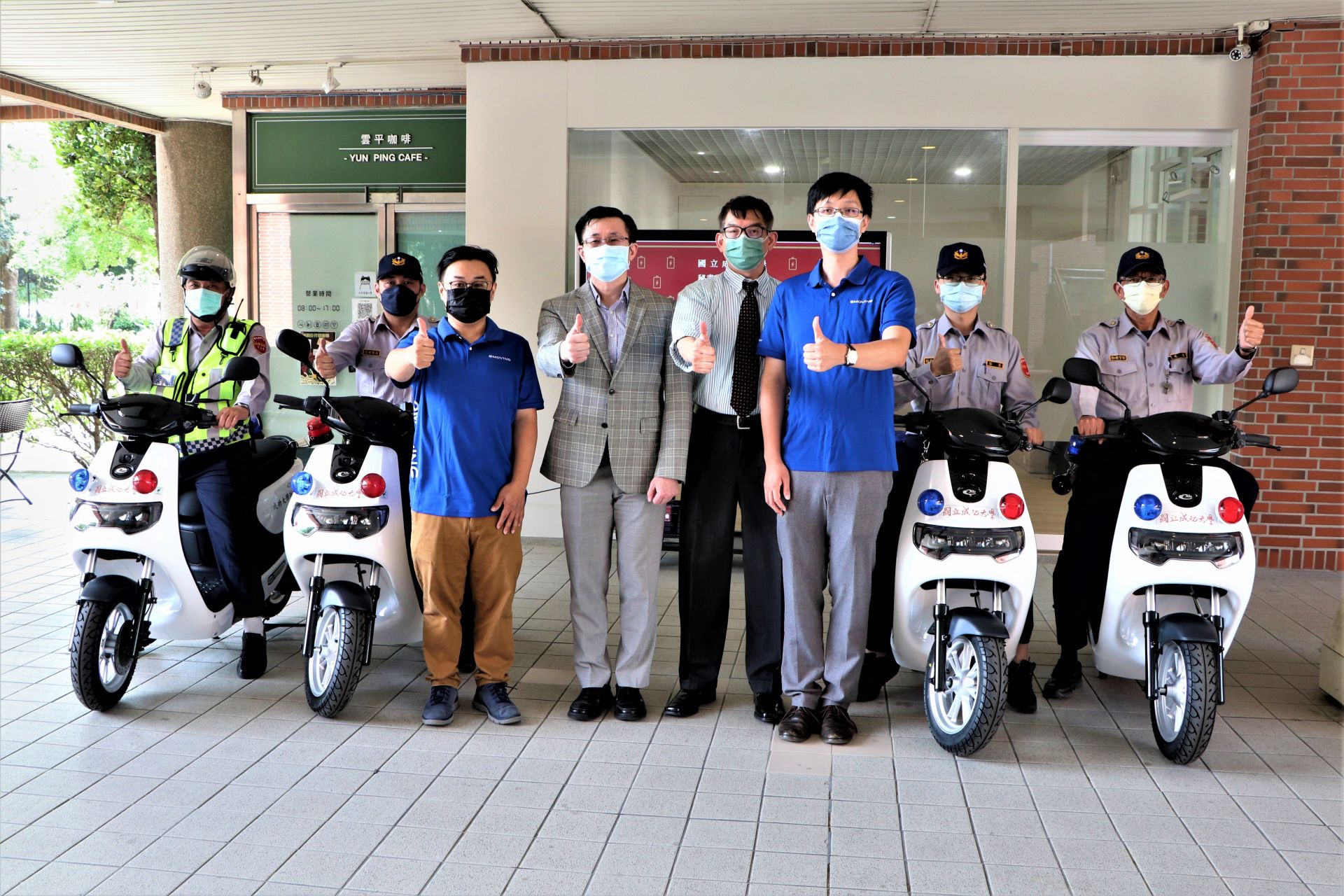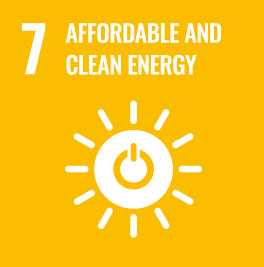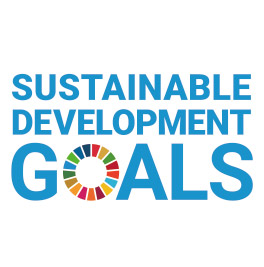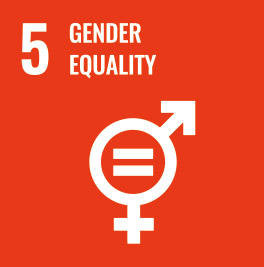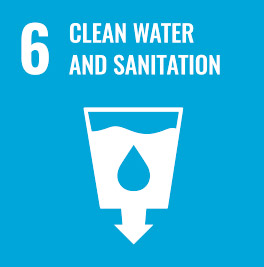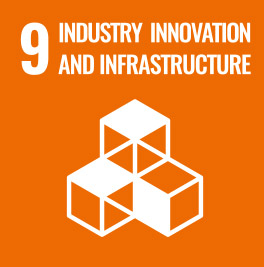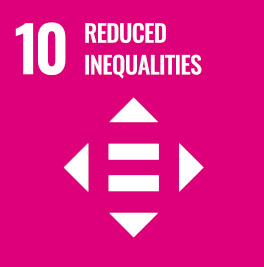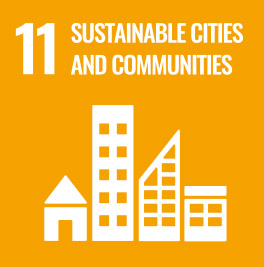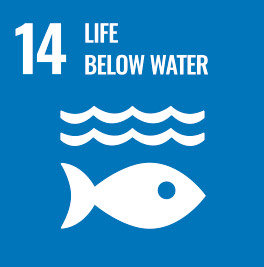SDG7
NCKU MSE Announces Chargeable- Dischargeable Solid Iron Batteries that are Highly Efficient, Lightweight, Eco-friendly and Safe.
The research team of Fei-Yi Hung, a Distinguished Professor in the Department of Materials Science and Engineering at National Cheng Kung University, has released a business-card-sized all-solid-state iron ion battery (solid-state iron battery), which utilizes an iron ion oxidation-reduction mechanism and a special non-woven fabric to improve the stability of the solid-state electrolyte, creating a solid-state iron battery that can be charged and discharged cyclically, and is small, inexpensive, and has a more stable structure. Its future application in the power carrier, energy storage industry, or military industry is highly anticipated.
"The solid-state iron battery is like a sandwich, and its structural composition consists of an iron foil at the negative electrode, a patented non-woven solid electrolyte, and a graphite carbon layer at the positive electrode. The research team of Professor Fei-Yi Hung from the Department of Materials of National Cheng Kung University, consisting of four graduate students, Chih-Yue Chen, Yi-Fen Hsiao, Wen-Jin Fan, and Pao-Yuan Huang, have successfully developed solid iron batteries, which break through the barrier of solid electrolyte to reduce ion movement, and take advantage of the filtering property of the fabric holes and the stability of encapsulation, so that the iron ions of iron oxide can freely pass through the non-woven layer without escaping, and enhance the stability of the battery structure, so that the performance of solid iron batteries in extreme environments is better than that of general solid batteries.
According to Fei-Yi Hung, this is the world's first all-solid-state iron-ion battery that incorporates iron ions for charging and discharging cycles. The battery is thin and light, and the cost of iron foil is expected to be 400 times lower than that of lithium foil. The team has mastered three key technologies, the first one is to control the concentration of iron ions in iron oxide to increase the capacity. The current capacity is 600 mAh per gram, and if 2400 of them can be connected in series, it will be able to drive an electric car for 500 km.
Secondly, the solid electrolyte itself contains ceramic oxide particles, and because the material lattice is large enough, it allows iron ions to tunnel freely between the two electrodes. A team from the Department of Materials Science and Engineering of NCKU, in collaboration with Tainan-based nonwoven fabric manufacturer Conaxiang, has expanded the spacing between the atomic layers with a patented nonwoven fabric, allowing iron ions to enter and exit smoothly, creating a cyclic path suitable for charging and discharging. According to experiments, the solid iron battery can be charged and discharged more than 300 times, which has great potential for future applications in power carriers.
Thirdly, in order to retain more iron ions and break through the laboratory type of solid electrolyte powder anchoring, a layer of non-woven fabric is wrapped on the surface after powder anchoring, which makes the electrolyte dense and resistant to collapse and cracking, and provides better adhesion to the electrode surface through the non-woven fabric wrapping treatment. "When iron ions pass through the solid electrolyte, they can be adsorbed onto the graphite carbon layer in large quantities and a stable manner, allowing iron ions and carbon atoms to have excellent bonding characteristics, increasing the long-term efficiency and stability, and making the solid iron battery structure more stable and resistant to high and low temperatures and corrosion, and having future development in extreme environments such as launch systems and underwater vehicles in the military industry.
Iron oxide reduction mechanism, commonly known as rust. Once a battery rusts, it loses its original function. The solid-iron battery released by the Department of Materials Science and Engineering of NCKU is not afraid of rusting, and can even be said to be "rusting for the sake of rusting because rusting can increase the power." Fei-Yi Hung explained that the iron foil reacts and turns into iron oxide, also known as rust, which can control the charging and discharging cycle of iron ions. When charging, the iron ions in the iron oxide can easily tunnel into the solid electrolyte and be embedded in the graphite carbon layer of the positive electrode; when discharging, the iron ions can also follow the original path back to the iron oxide form. The more iron ions, the more power the solid-state iron battery can produce.
High-performance, lightweight solid-state batteries are considered to be the up-and-comer for electric vehicles and energy storage applications. Professor Fei-Yi Hung has been working on solid-state battery technology for more than 10 years and has long been committed to research on environmentally friendly batteries, with the vision of establishing a "Battery Certification Center" to promote safe and green batteries from the source. Prof. Hung pointed out that "the liquid lithium battery is known to have volatile toxic carcinogenic substances; it is flammable and has the risk of explosion under high temperature. As for the solid-state lithium batteries, which are being actively researched and developed by various sectors, there are hidden technical problems such as high cost and low stability, and because they contain extremely large amounts of lithium metal, the solid-state lithium battery is a bomb, which is thousands of times more dangerous than the liquid lithium battery."
The solid iron battery released by the Department of Materials Science and Engineering of NCKU can not only be charged and discharged quickly with high voltage and high current but also has high efficiency and is absolutely safe. Prof. Hung emphasizes that the material used is safe and non-toxic, and can be recycled directly after use, without any concern for health and environmental protection or combustion and explosion, making it the most competitive solid-state battery in the world.
"The solid-state iron battery is like a sandwich, and its structural composition consists of an iron foil at the negative electrode, a patented non-woven solid electrolyte, and a graphite carbon layer at the positive electrode. The research team of Professor Fei-Yi Hung from the Department of Materials of National Cheng Kung University, consisting of four graduate students, Chih-Yue Chen, Yi-Fen Hsiao, Wen-Jin Fan, and Pao-Yuan Huang, have successfully developed solid iron batteries, which break through the barrier of solid electrolyte to reduce ion movement, and take advantage of the filtering property of the fabric holes and the stability of encapsulation, so that the iron ions of iron oxide can freely pass through the non-woven layer without escaping, and enhance the stability of the battery structure, so that the performance of solid iron batteries in extreme environments is better than that of general solid batteries.
According to Fei-Yi Hung, this is the world's first all-solid-state iron-ion battery that incorporates iron ions for charging and discharging cycles. The battery is thin and light, and the cost of iron foil is expected to be 400 times lower than that of lithium foil. The team has mastered three key technologies, the first one is to control the concentration of iron ions in iron oxide to increase the capacity. The current capacity is 600 mAh per gram, and if 2400 of them can be connected in series, it will be able to drive an electric car for 500 km.
Secondly, the solid electrolyte itself contains ceramic oxide particles, and because the material lattice is large enough, it allows iron ions to tunnel freely between the two electrodes. A team from the Department of Materials Science and Engineering of NCKU, in collaboration with Tainan-based nonwoven fabric manufacturer Conaxiang, has expanded the spacing between the atomic layers with a patented nonwoven fabric, allowing iron ions to enter and exit smoothly, creating a cyclic path suitable for charging and discharging. According to experiments, the solid iron battery can be charged and discharged more than 300 times, which has great potential for future applications in power carriers.
Thirdly, in order to retain more iron ions and break through the laboratory type of solid electrolyte powder anchoring, a layer of non-woven fabric is wrapped on the surface after powder anchoring, which makes the electrolyte dense and resistant to collapse and cracking, and provides better adhesion to the electrode surface through the non-woven fabric wrapping treatment. "When iron ions pass through the solid electrolyte, they can be adsorbed onto the graphite carbon layer in large quantities and a stable manner, allowing iron ions and carbon atoms to have excellent bonding characteristics, increasing the long-term efficiency and stability, and making the solid iron battery structure more stable and resistant to high and low temperatures and corrosion, and having future development in extreme environments such as launch systems and underwater vehicles in the military industry.
Iron oxide reduction mechanism, commonly known as rust. Once a battery rusts, it loses its original function. The solid-iron battery released by the Department of Materials Science and Engineering of NCKU is not afraid of rusting, and can even be said to be "rusting for the sake of rusting because rusting can increase the power." Fei-Yi Hung explained that the iron foil reacts and turns into iron oxide, also known as rust, which can control the charging and discharging cycle of iron ions. When charging, the iron ions in the iron oxide can easily tunnel into the solid electrolyte and be embedded in the graphite carbon layer of the positive electrode; when discharging, the iron ions can also follow the original path back to the iron oxide form. The more iron ions, the more power the solid-state iron battery can produce.
High-performance, lightweight solid-state batteries are considered to be the up-and-comer for electric vehicles and energy storage applications. Professor Fei-Yi Hung has been working on solid-state battery technology for more than 10 years and has long been committed to research on environmentally friendly batteries, with the vision of establishing a "Battery Certification Center" to promote safe and green batteries from the source. Prof. Hung pointed out that "the liquid lithium battery is known to have volatile toxic carcinogenic substances; it is flammable and has the risk of explosion under high temperature. As for the solid-state lithium batteries, which are being actively researched and developed by various sectors, there are hidden technical problems such as high cost and low stability, and because they contain extremely large amounts of lithium metal, the solid-state lithium battery is a bomb, which is thousands of times more dangerous than the liquid lithium battery."
The solid iron battery released by the Department of Materials Science and Engineering of NCKU can not only be charged and discharged quickly with high voltage and high current but also has high efficiency and is absolutely safe. Prof. Hung emphasizes that the material used is safe and non-toxic, and can be recycled directly after use, without any concern for health and environmental protection or combustion and explosion, making it the most competitive solid-state battery in the world.
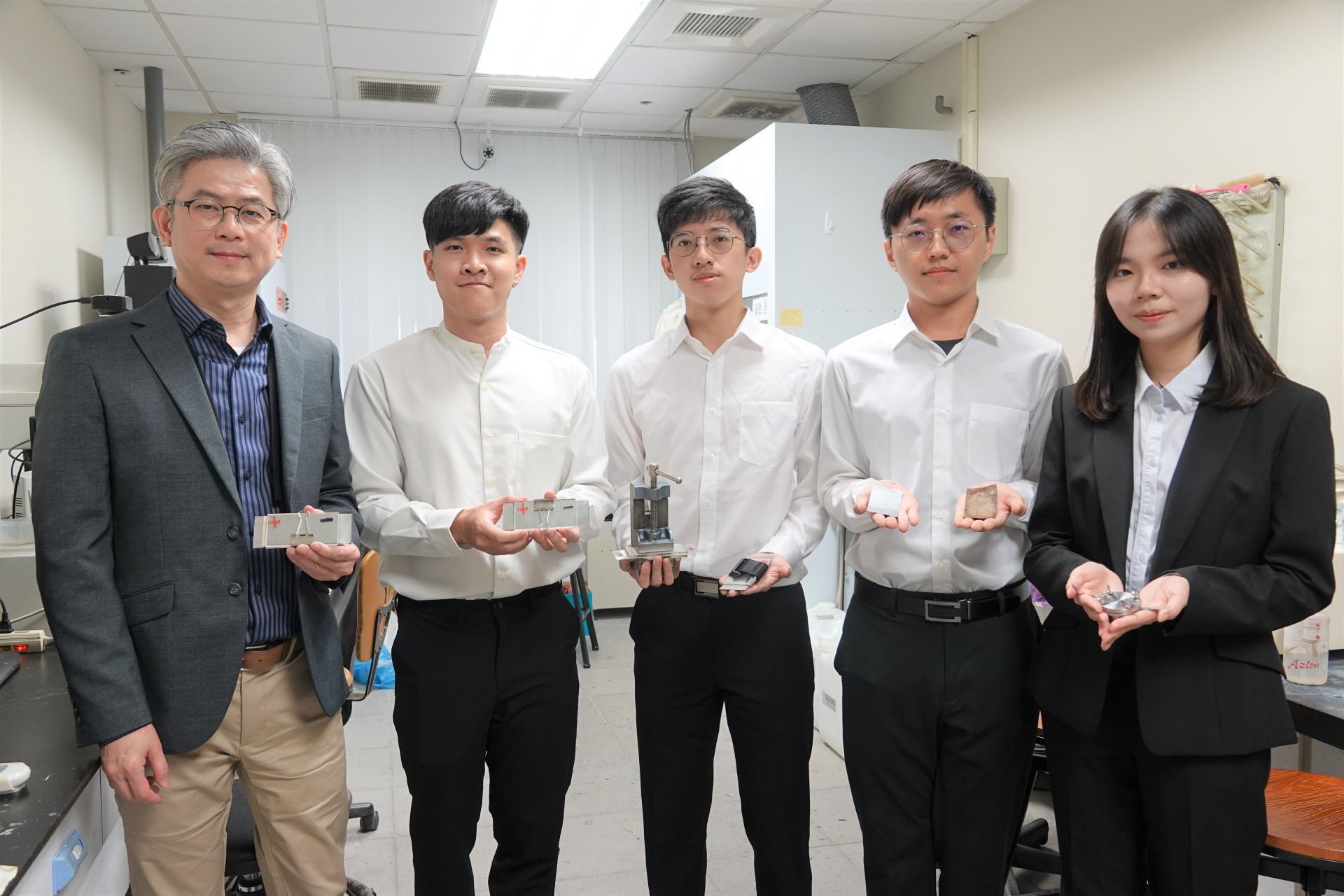
Professor Fei-Yi Hung and his research team.
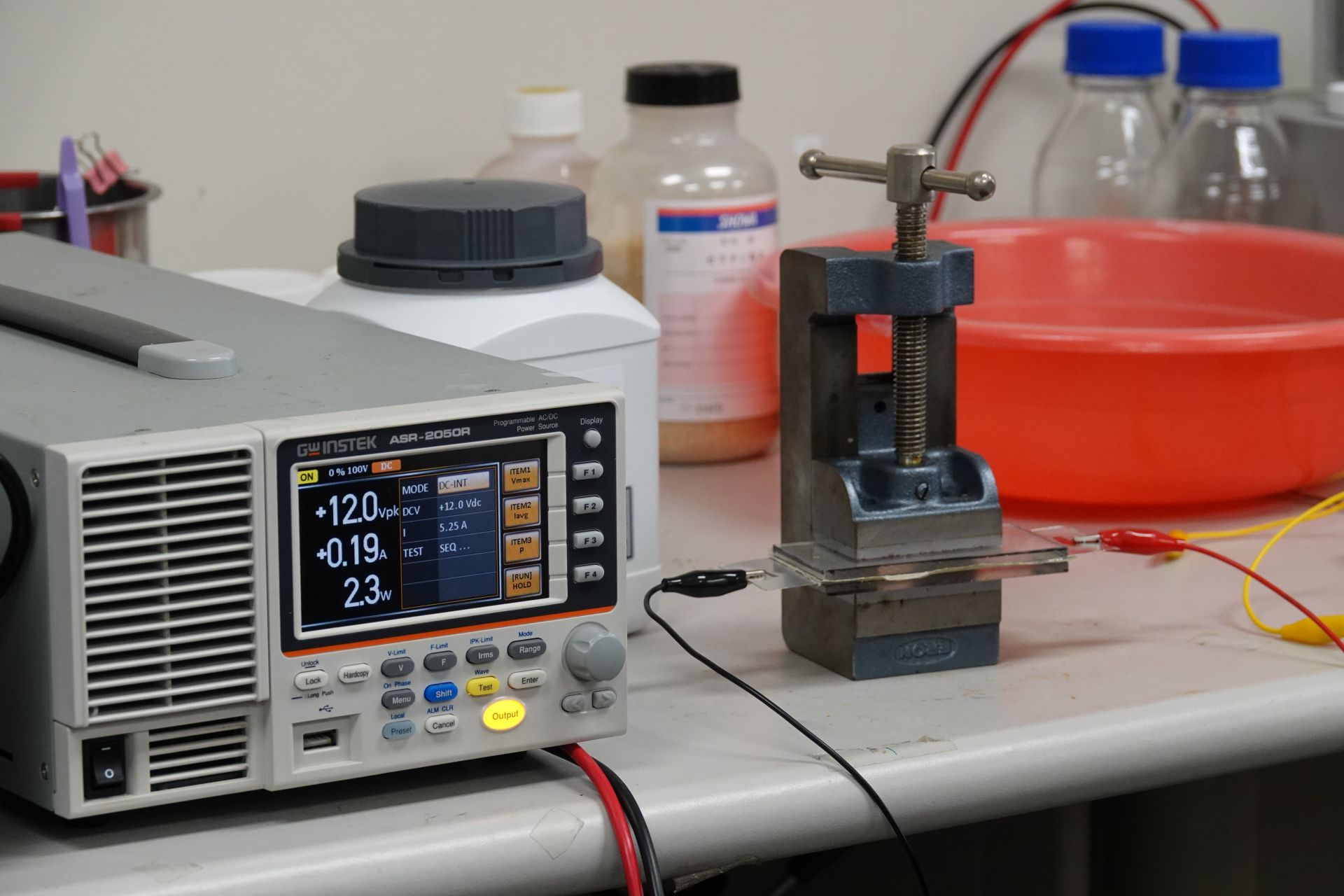
A solid-state iron battery that can be charged and discharged quickly with high voltage and high current.
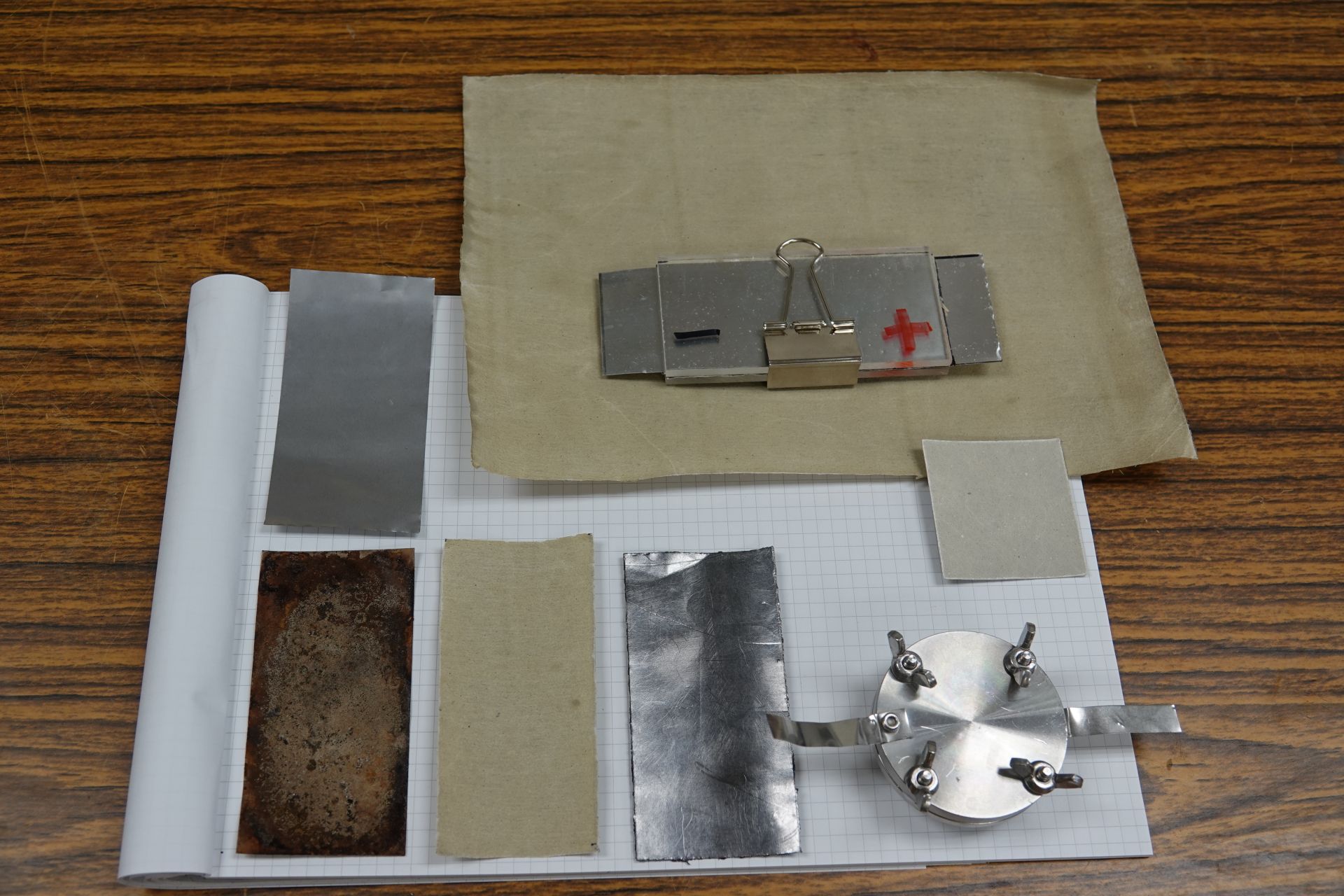
Materials of solid iron batteries: top row are iron foil and business-card-type solid iron ion battery; bottom row are rusted iron foil, solid electrolyte, carbon layer, and anchor type solid iron battery.
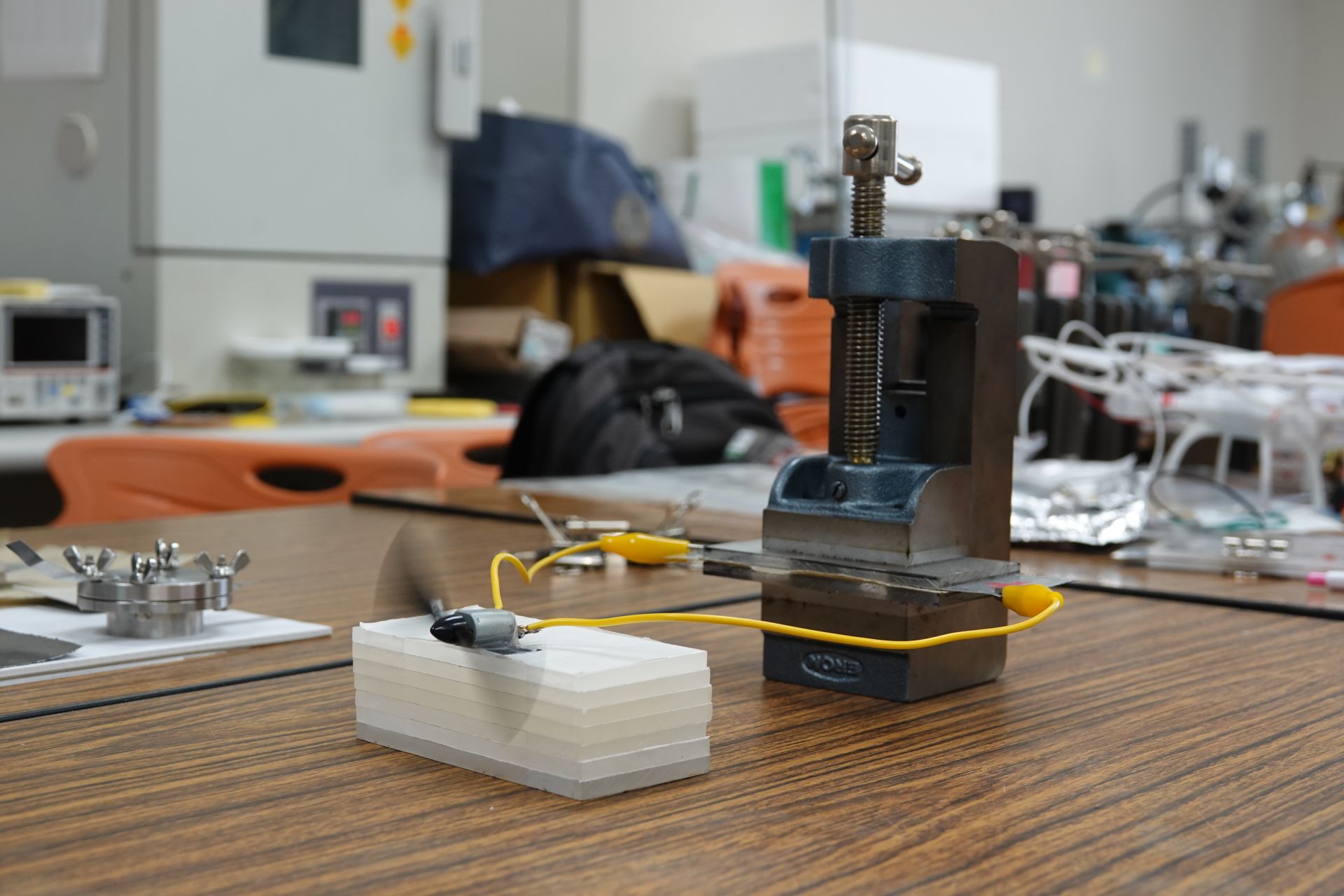
The business card-type solid iron battery developed by Prof. Fei-Yi Hung and his team can drive a motor for 60 seconds after 30 seconds of charging.

Fei-Yi Hung, a Distinguished Professor in the Department of Materials Science and Engineering who has been working on solid-state battery technology for more than 10 years.
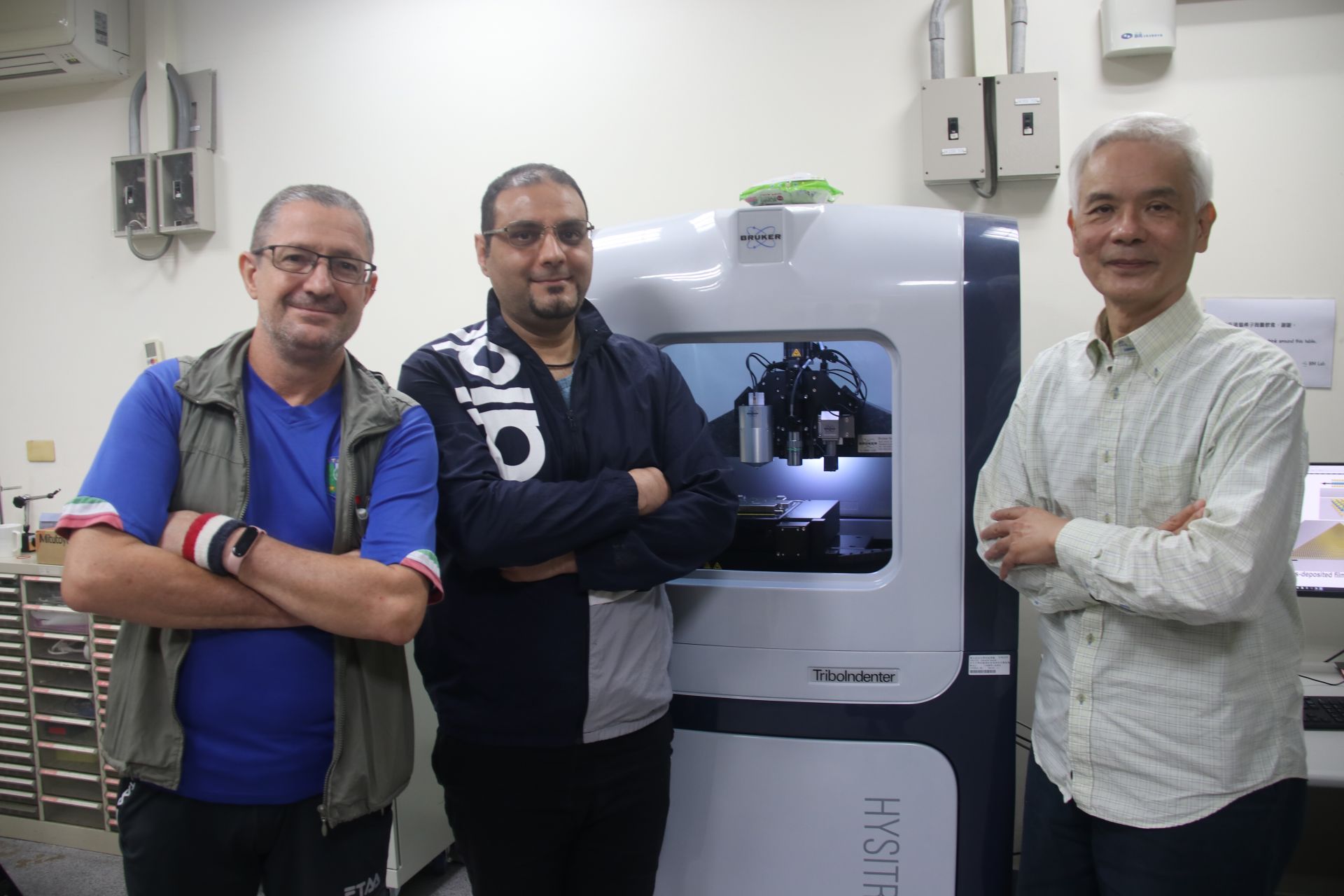
SDG7Team Yeau-Ren Jeng were on Applied Materials Today with Eco-friendly and Carbon-reducing Vegetable-based Lubricants
View more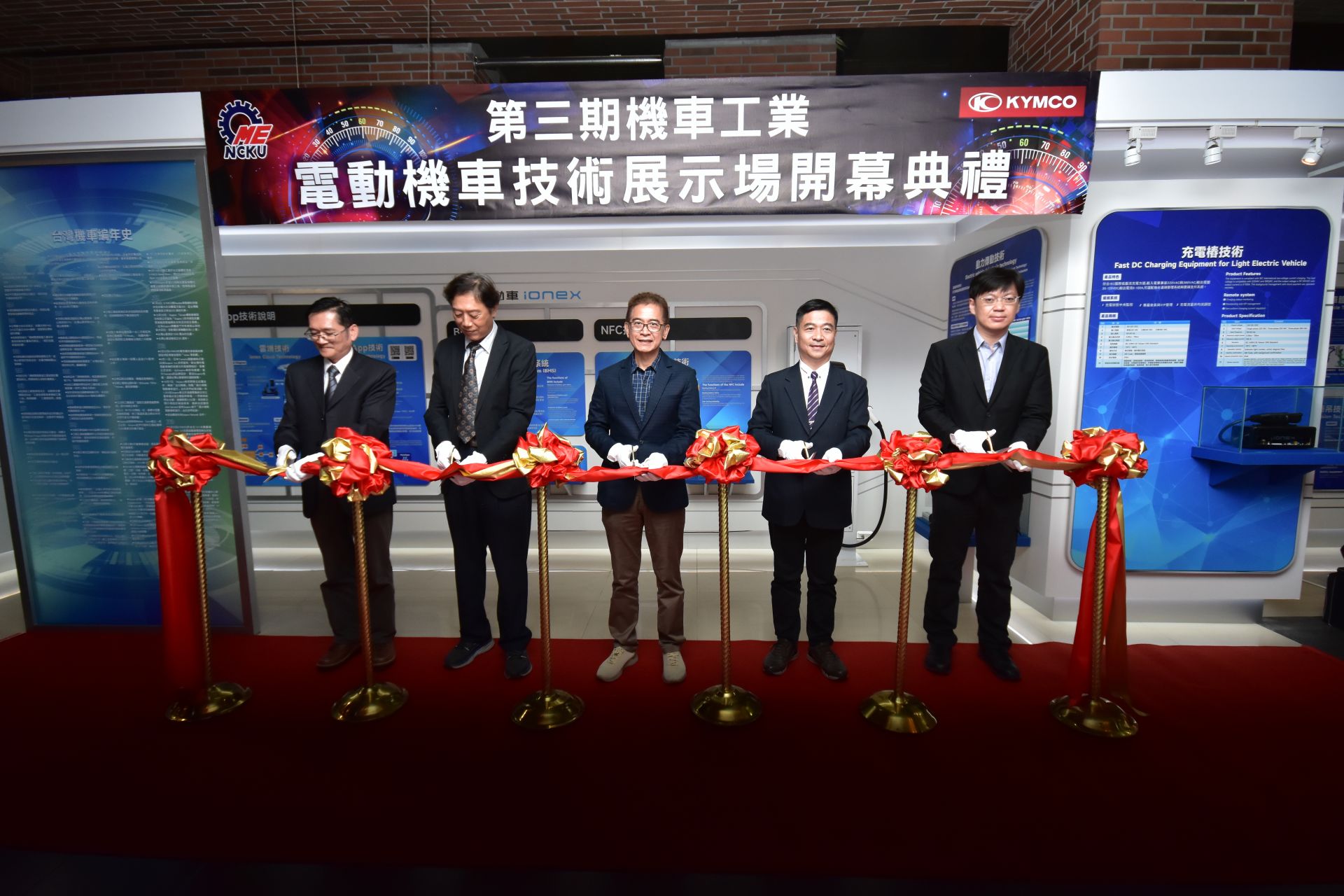
SDG7Collaboration between NCKU Department of Mechanical Engineering and Kwang Yang Motor is being showcased
View more